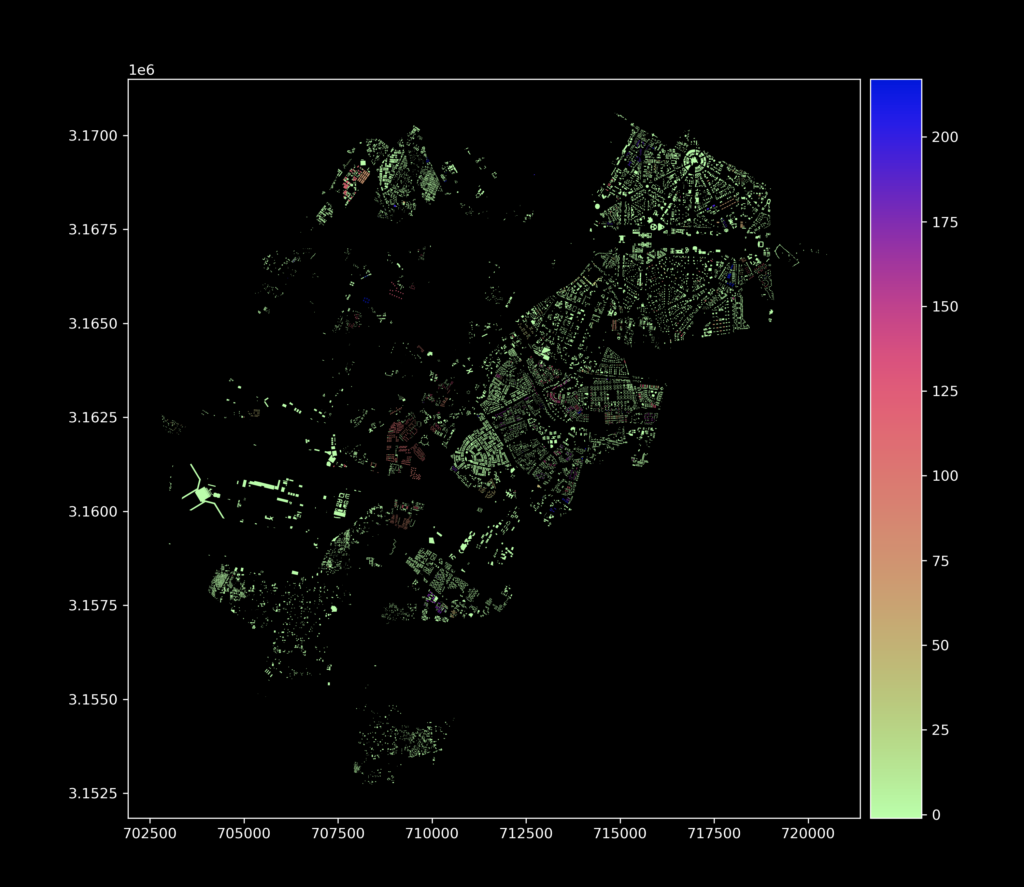During the Internet of Building studio we developed a strategy of predicting the typologies of buildings in New Delhi, India by data, using algorithmic approaches as KMEANS, DBSCAN and PCA aswell a a heuristig rule-set. The objective of this project is to predict if a building in New Delhi is part of a formal settlement or “housing project” or not, predicting the probability aswell as trying to cluster them into specific housing projects, – using geometrical features only.
The projects aims at two outputs:
First a more generic approach examines if building typologies can be estimated by geometrical features.
Secondly, a more specific approach tries to assign the buildings to specific housing projects bei geometrical features only.
Resource:
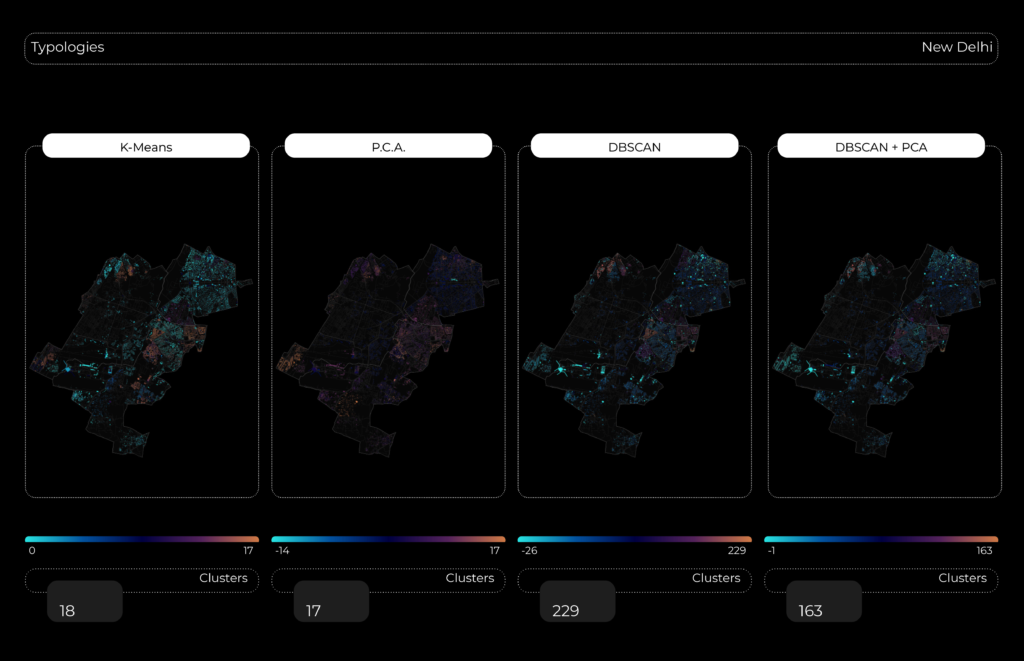
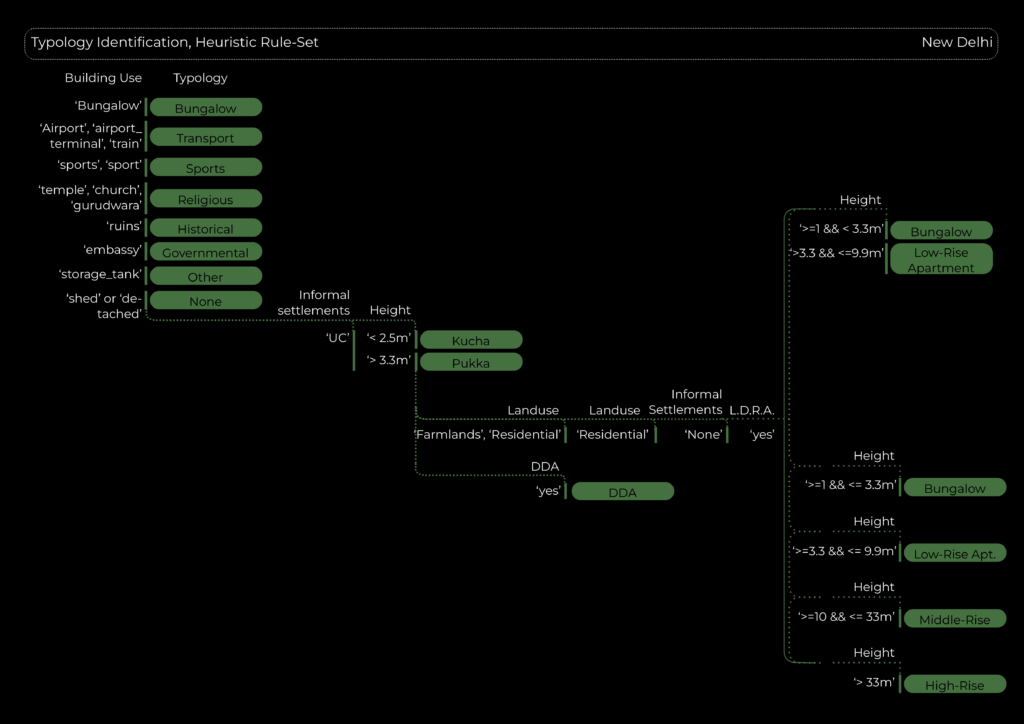
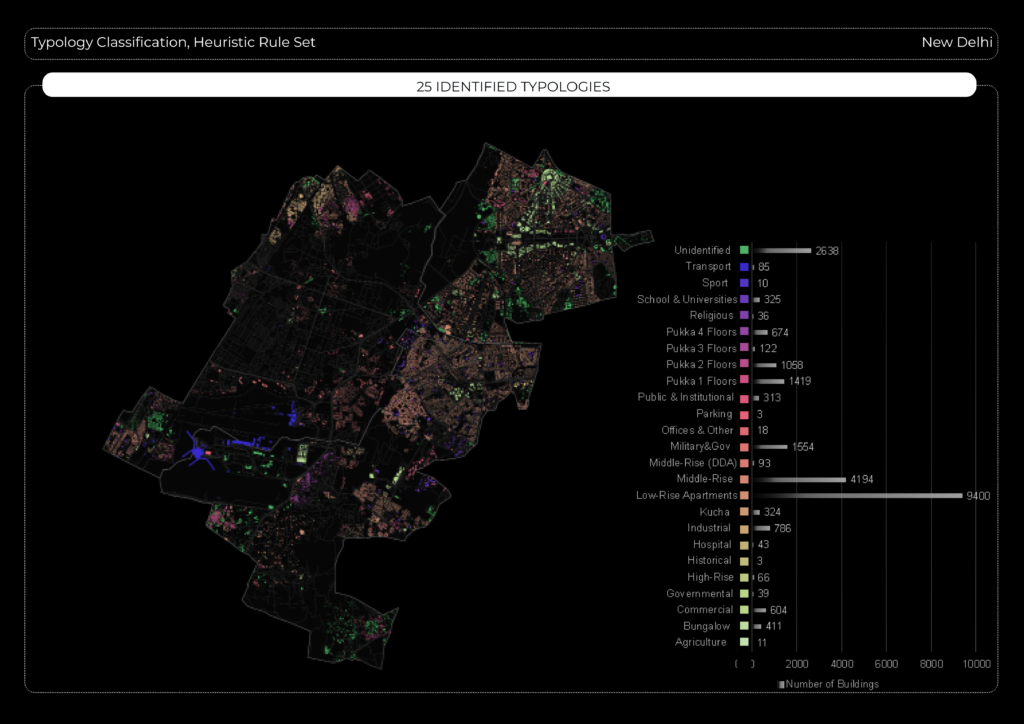
Geometrical parameters:
- Area of the polygons . Larger buildings or housing projects may be represented by larger polygons
- Outer Circle Area – Inner Circle Area
- Anisotropicity
- Perimeter-to-Area Ratio
- Orientation
- Polygon Density based on Distance
- Circularity Ratio – Regularity of a building shape
- Elongation – how much a polygon deviates from being perfectly equilateral or regular
- Compactness – similar to Perimeter-to-Area Ratio
- Aspect Ratio
- Rectangularity
- Solidity
- Street Network – Using the fractality of the nearby street network as indicator
- Convexity Ratio
Substraction: Outer Circle Area – Inner Circle Area
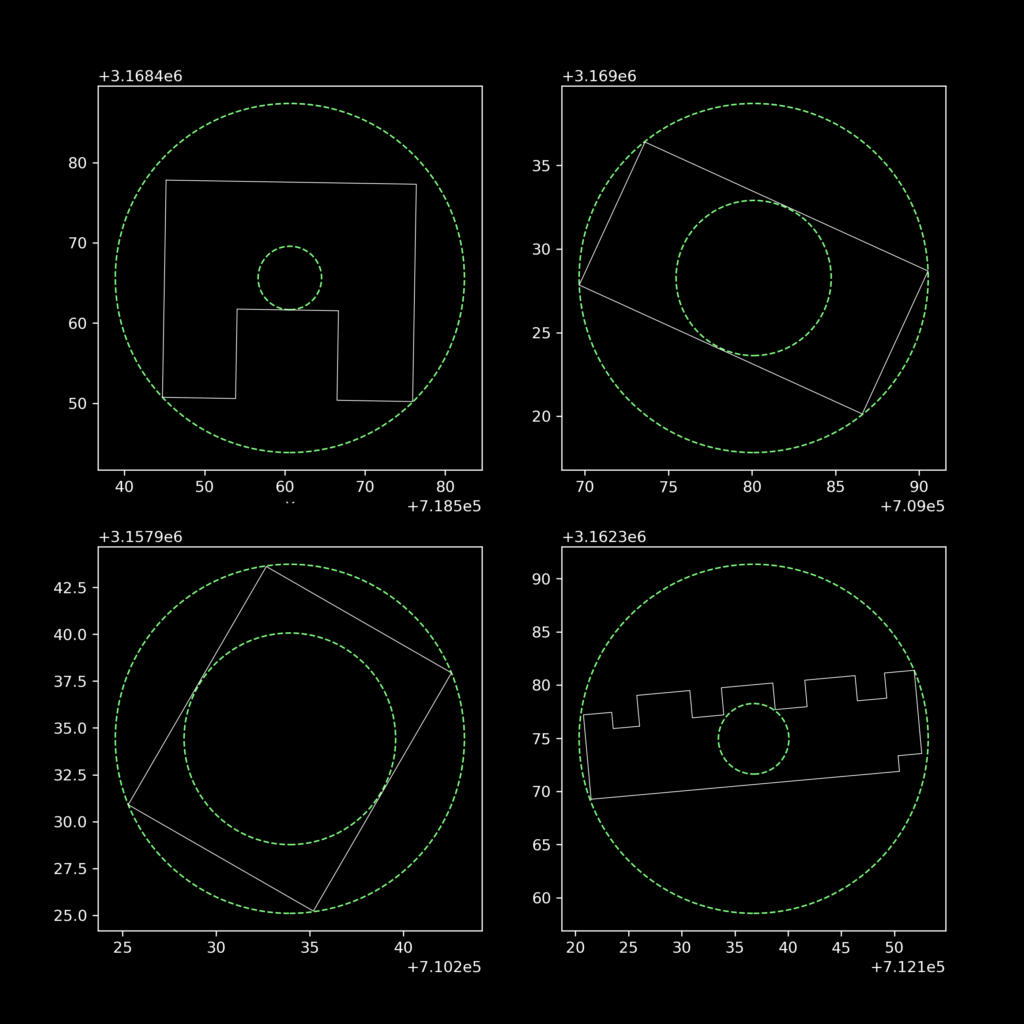
Anisotropy
The ratio of the minimum to maximum axis lengths of an ellipse that encloses the feature. Close to 1 for near-circular (isotropic) features Close to 0 for highly elongated (anisotropic) features
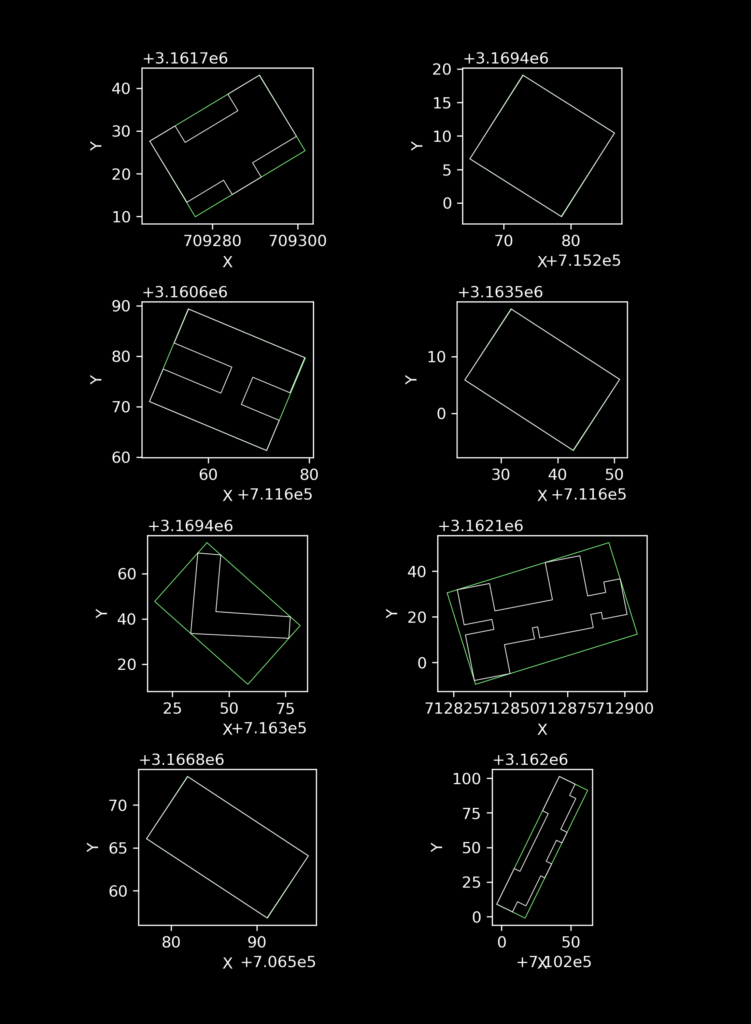
Anisotropy, New Delhi
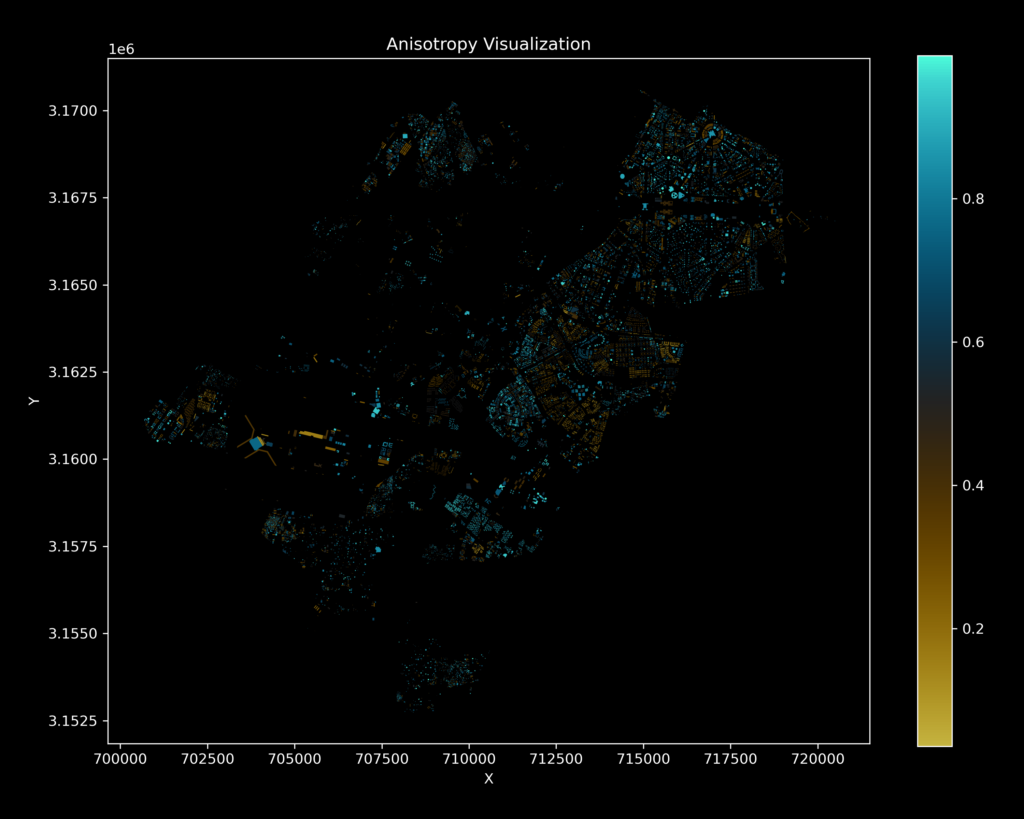
Street Network – Intersections, Avg. Street Lenght, Total Street Length
Using the fractality of the nearby street network collected by buffers as indicator for housing formality.
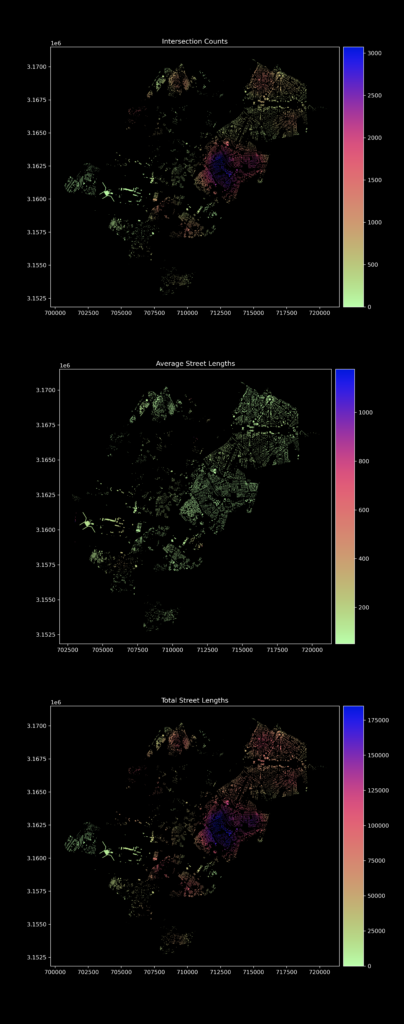
Building Density
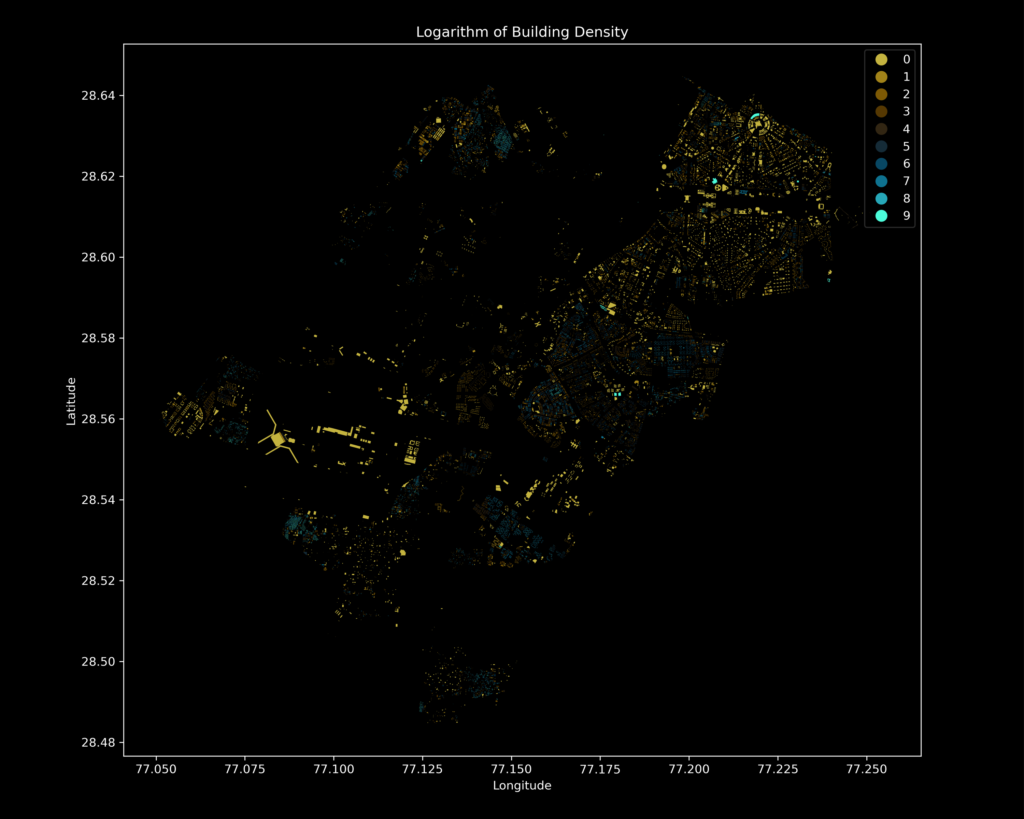
A
A DBSCAN clustering algorithm was applied firstly as unsupervised approach, a probability if a building is part of a formal housing project was predicted with an semisupervised approach and manually labeled buildings used as training set.
Predicted Probabilities
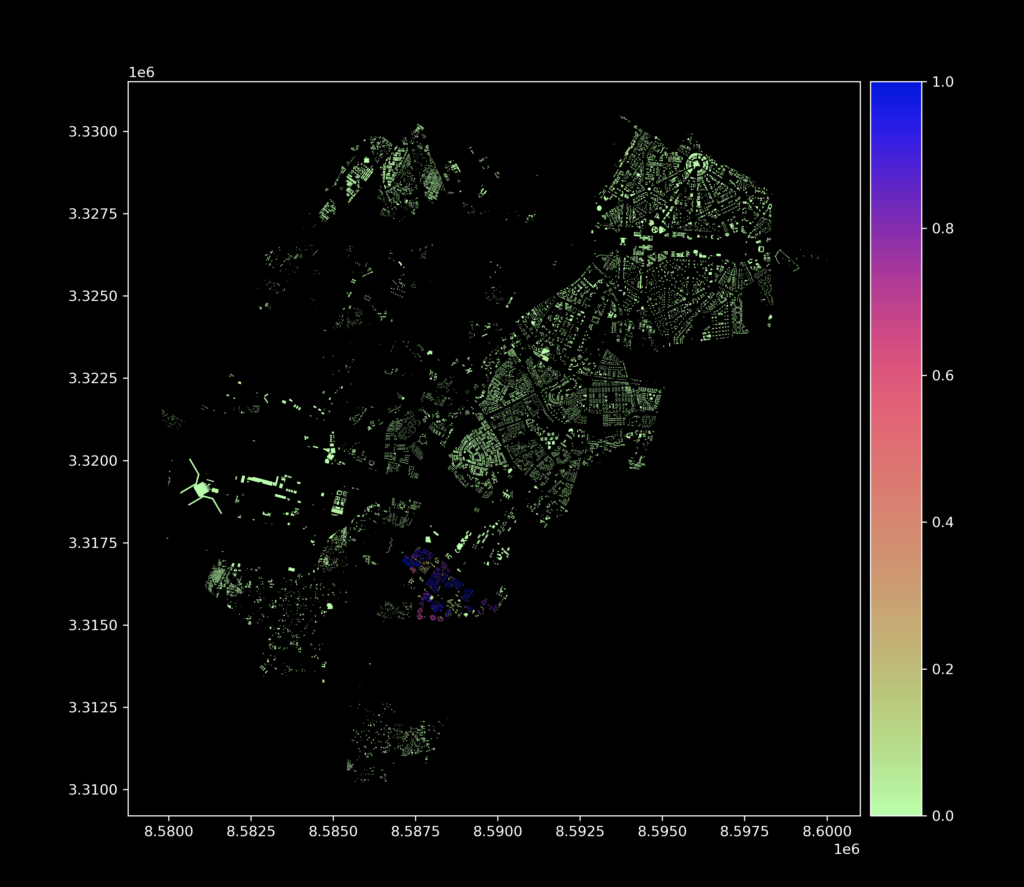
As last step, a second training set has been included to predict which buildings might form a specific housing project.
Predicted housing project cluster
